Table of Contents
Got a feline Einstein on your hands? You know, the kind of cat that figures out how to open cabinets or unlocks the secrets of the treat jar? Regular cat toys just won't cut it for these brainy buddies. They need something that challenges them, keeps them entertained, and prevents them from turning their intellectual energy towards… less desirable activities (like redecorating your living room at 3 AM). Finding the best cat toys for smart cats isn't just about fun; it's about enriching their lives and satisfying their natural curiosity. This article is your ultimate guide to understanding why smart cats need special toys and how to choose the perfect ones. We'll explore a range of interactive toys, puzzle feeders, and even DIY projects to keep your clever kitty engaged and happy. Get ready to unlock your cat's full potential and say goodbye to boredom-induced mischief!
Why Smart Cats Need Special Toys
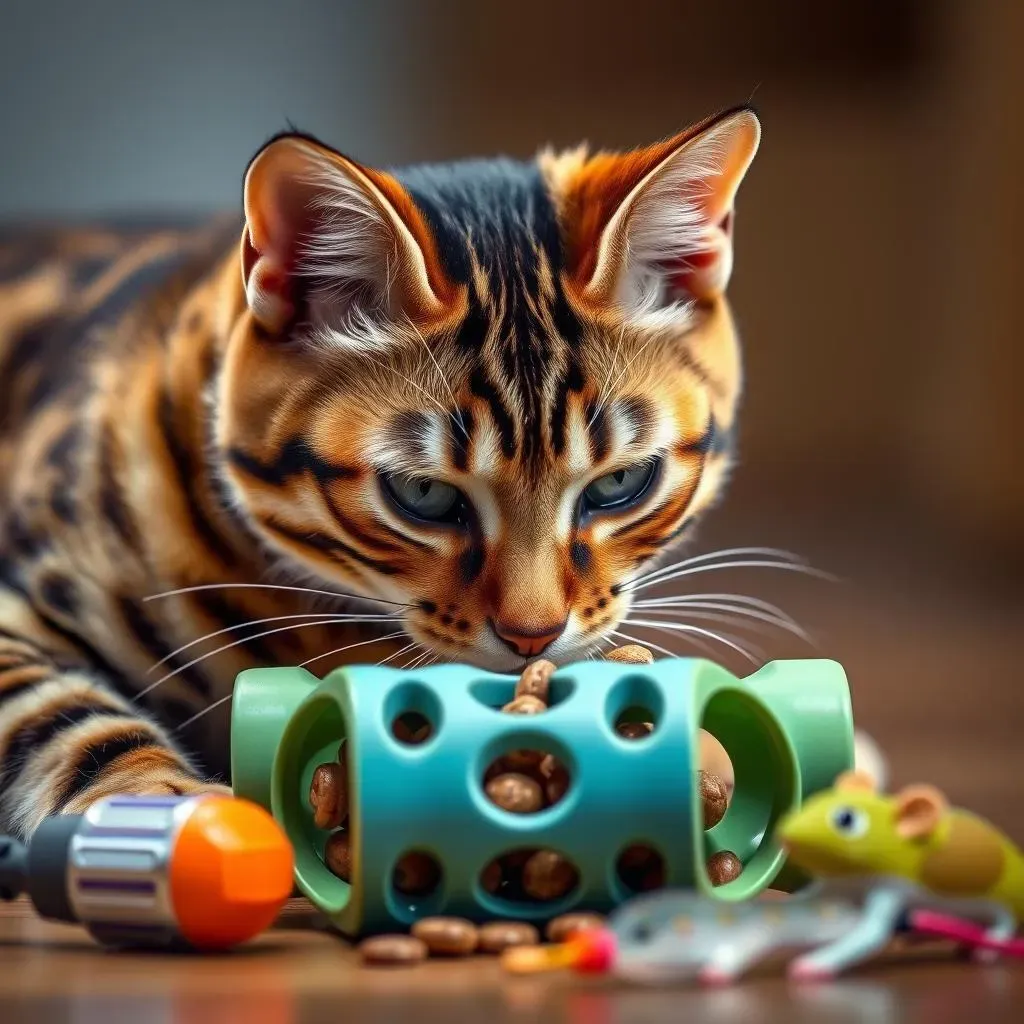
Why Smart Cats Need Special Toys
Preventing Boredom and Destructive Behavior
Let's face it, a bored cat is a mischievous cat. Smart cats, in particular, need mental stimulation to keep them from turning your furniture into a scratching post or your curtains into a climbing wall. A lack of engagement can lead to destructive behaviors, excessive meowing, and even depression in some felines. Special toys designed to challenge their intellect can help redirect that energy into positive play.
Think of it like this: you wouldn't expect a child genius to be content with simple building blocks forever, would you? Smart cats are the same way. They need puzzles, games, and interactive toys that engage their minds and satisfy their natural curiosity. Otherwise, they'll find their own "fun," and trust me, you probably won't like it.
Satisfying Natural Hunting Instincts
Even though they're domesticated, cats are natural hunters. This instinct is especially strong in intelligent breeds like Bengals, Siamese, and Abyssinians. Toys that mimic the thrill of the hunt, such as puzzle feeders that require them to "work" for their food or interactive toys that move erratically, can provide a satisfying outlet for these instincts.
It's not just about the food, it's about the process. When a cat successfully "catches" its prey (even if it's just a toy mouse filled with catnip), it experiences a surge of dopamine, a neurotransmitter associated with pleasure and reward. This keeps them happy, engaged, and less likely to seek out other, less desirable, hunting opportunities (like your ankles!).
Enhancing Cognitive Abilities and Problem-Solving Skills
Just like humans, cats benefit from mental exercise. Engaging with challenging toys can help improve their cognitive abilities, problem-solving skills, and memory. Puzzle toys, for example, require cats to figure out how to manipulate objects to access a treat or toy. This type of mental workout can keep their minds sharp and prevent cognitive decline as they age.
Moreover, the satisfaction of solving a puzzle or mastering a new skill can boost a cat's confidence and overall well-being. It's like giving them a little "I'm so smart!" moment, which, let's be honest, they probably already think they are anyway. By providing them with opportunities to learn and grow, you're not just keeping them entertained, you're helping them thrive.
Benefit | Description |
|---|---|
Prevents Boredom | Keeps cats engaged and prevents destructive behaviors. |
Satisfies Hunting Instincts | Provides an outlet for natural hunting behaviors. |
Enhances Cognitive Abilities | Improves problem-solving skills and memory. |
Top Interactive Cat Toys for Clever Kitties
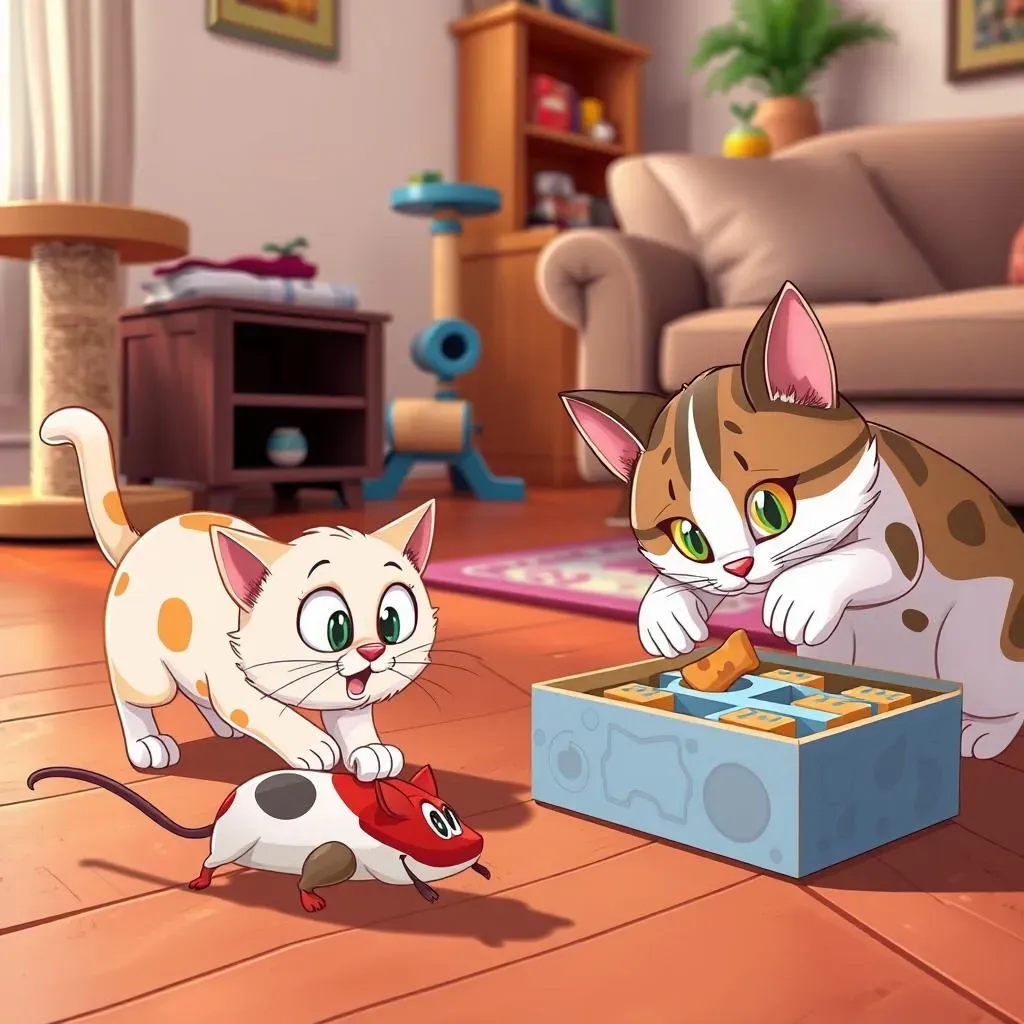
Top Interactive Cat Toys for Clever Kitties
Motion Activated Toys: The Thrill of the Chase
These toys are designed to mimic the movement of prey, triggering your cat's hunting instincts. Think battery-operated mice that dart around the room, wands with feathers that flutter and dance, or even laser pointers that create an irresistible chase. The key is to choose toys with varied movements to keep your cat engaged and prevent them from getting bored. Some motion-activated toys even come with adjustable speed settings, allowing you to customize the challenge level for your clever kitty.
Remember to always supervise your cat when playing with laser pointers, and never shine the beam directly into their eyes. Safety first, even when hunting imaginary prey! Also, it's a good idea to put the laser pointer away after a play session. This prevents your cat from becoming frustrated if they can't "catch" the light and helps maintain the toy's allure for future play sessions. It's all about keeping them on their toes!
Puzzle Boxes and Treat Dispensers: Mental Gymnastics for Felines
Puzzle boxes and treat dispensers are fantastic for challenging your cat's problem-solving skills. These toys require your cat to manipulate objects, open compartments, or solve simple puzzles to access a hidden treat or toy. They come in a variety of difficulty levels, from beginner-friendly options with simple sliding mechanisms to more advanced puzzles that require multiple steps to solve.
Start with an easier puzzle to introduce your cat to the concept, and gradually increase the difficulty as they become more proficient. Not only do these toys provide mental stimulation, but they also slow down fast eaters, preventing them from scarfing down their food too quickly and potentially reducing the risk of digestive issues. It's a win-win for both their mind and their body!
Toy Type | Description | Benefits |
|---|---|---|
Motion Activated Toys | Mimic the movement of prey. | Triggers hunting instincts, provides exercise. |
Puzzle Boxes/Treat Dispensers | Requires manipulation to access treats. | Challenges problem-solving skills, slows down eating. |
Puzzle Feeders: Engaging Your Cat's Mind at Mealtime
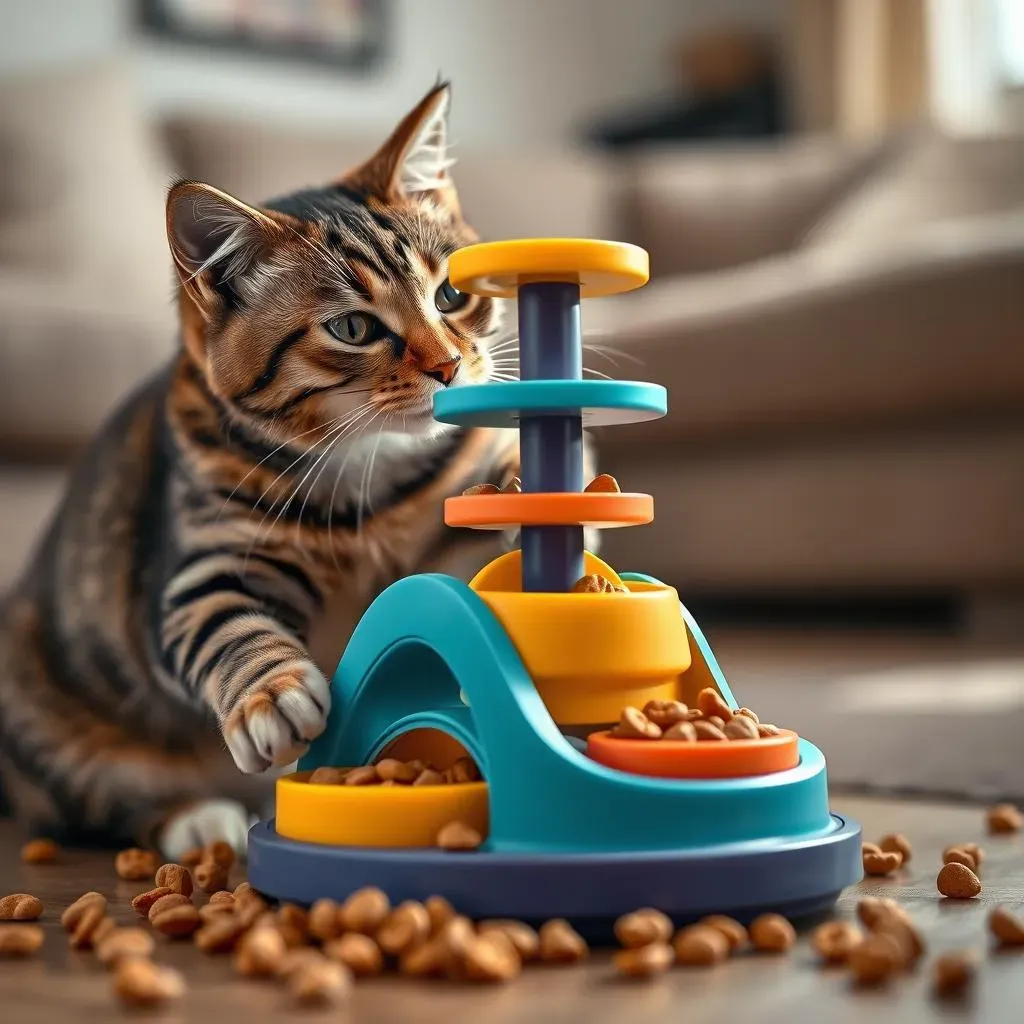
Puzzle Feeders: Engaging Your Cat's Mind at Mealtime
The Benefits of Food Puzzles for Cats
so you're looking for ways to spice up your cat's mealtime? Puzzle feeders are where it's at! These aren't just bowls; they're interactive challenges that make your cat work for their food. Think of it as turning mealtime into a mini-hunting expedition. Instead of mindlessly scarfing down kibble, your cat has to use its brain to figure out how to access the goodies. This can involve pawing, nudging, batting, or even strategically maneuvering the puzzle to release the food. It's like a feline version of a Rubik's Cube, but with a tastier reward!
Why is this good? Well, for starters, it combats boredom like a champ. A bored cat is a destructive cat, remember? Puzzle feeders keep them engaged and entertained, preventing them from turning to less desirable activities, like shredding your toilet paper. Plus, it taps into their natural hunting instincts, providing a sense of accomplishment and satisfaction. It also can help with weight management by slowing down eating.
Types of Puzzle Feeders to Consider
The cool thing about puzzle feeders is that there's a huge variety to choose from. You've got your basic treat balls, which dispense kibble as your cat rolls them around. Then there are stationary puzzles with compartments that your cat has to open or manipulate to get to the food. Some even have multiple levels of difficulty, so you can gradually increase the challenge as your cat gets smarter (or, you know, figures out all the tricks). There are also electronic options that release food at scheduled times or when your cat interacts with them in a certain way. The possibilities are endless!
When choosing a puzzle feeder, consider your cat's personality and skill level. Start with something simple if they're new to the concept, and gradually work your way up to more complex puzzles. Also, make sure the feeder is made from durable, non-toxic materials and is easy to clean. After all, you don't want your cat's brain-boosting toy to become a breeding ground for bacteria! Here are some ideas:
Puzzle Feeder Type | Description | Difficulty Level |
|---|---|---|
Treat Ball | Dispenses kibble as the cat rolls it. | Easy |
Stationary Puzzle | Compartments to open for food. | Medium to Hard |
Electronic Feeder | Releases food at scheduled times. | Variable |
DIY Best Cat Toys for Smart Cats: Creative Ideas
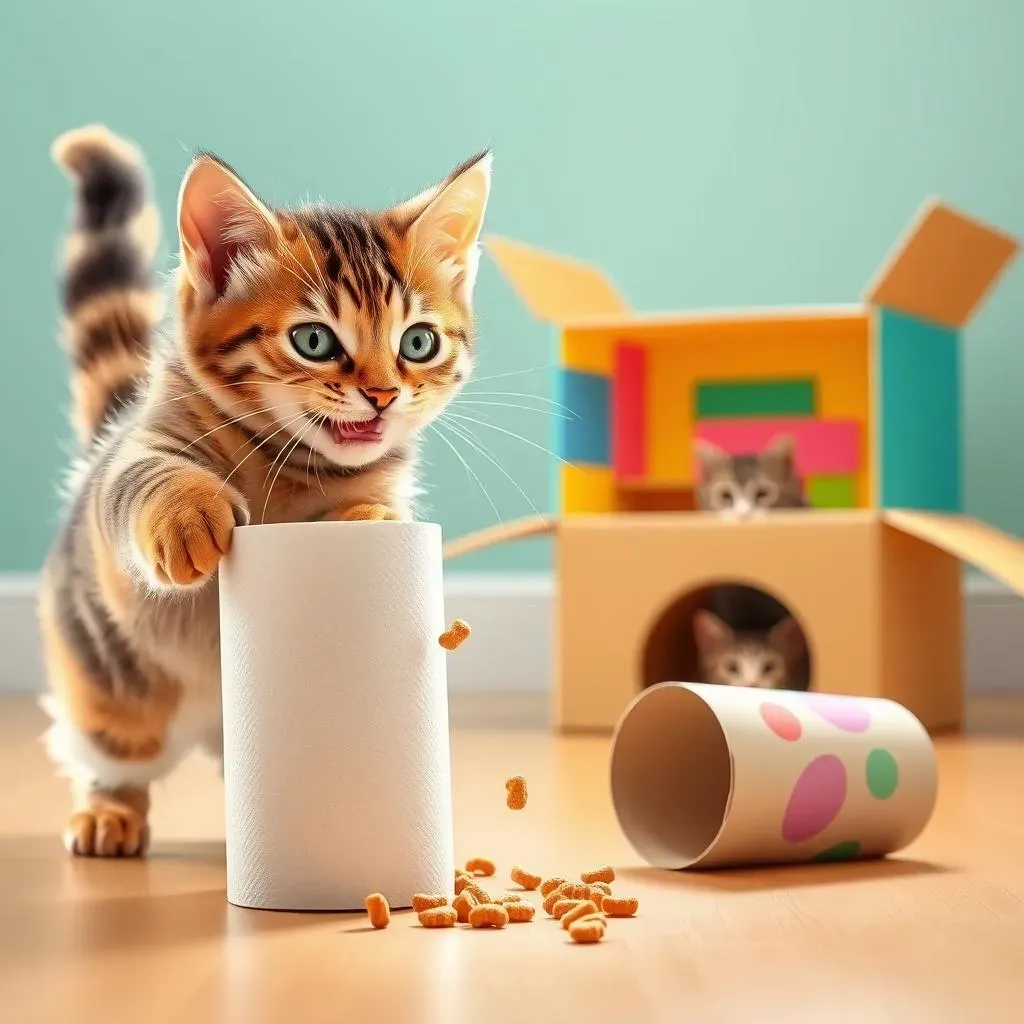
DIY Best Cat Toys for Smart Cats: Creative Ideas
Toilet Paper Roll Treat Dispensers
Don't toss those empty toilet paper rolls! They're a goldmine for DIY cat toys. For a simple treat dispenser, fold in one end of the roll, fill it with kibble or treats, and then fold in the other end. Your cat will have to bat, chew, and manipulate the roll to get the goodies out. For an added challenge, cut a few small holes in the roll to make it easier for the treats to escape, but also more stimulating for your cat to figure out. This is a super cheap and easy way to keep your cat entertained, and it's a great way to recycle!
Want to get fancy? Decorate the roll with non-toxic markers or glue on some feathers or fabric scraps. Just make sure everything is securely attached so your cat doesn't ingest anything they shouldn't. You can also vary the size of the holes or the amount of treats inside to keep things interesting. The key is to experiment and see what your cat enjoys most. Plus, you can always make a new one when the old one gets destroyed. It's a never-ending supply of fun!
Cardboard Box Mazes
Cardboard boxes are a cat's natural habitat, but you can take things to the next level by creating a cardboard box maze. Gather a few different sized boxes and cut holes in the sides to connect them. You can create tunnels, dead ends, and even multiple levels. Place treats or toys inside the maze to encourage your cat to explore. This is a great way to stimulate their curiosity and problem-solving skills, and it provides them with a safe and enclosed space to play.
To make it even more engaging, try adding different textures to the inside of the boxes. Glue on carpet scraps, bubble wrap, or even crumpled paper. You can also hang toys from the ceiling of the boxes to create a more interactive experience. Just make sure the boxes are sturdy and won't collapse on your cat. Safety first, always! This is a project that can be as simple or as elaborate as you want it to be. Get creative and have fun with it!
DIY Toy | Materials | Benefits |
|---|---|---|
Toilet Paper Roll Dispenser | Toilet paper roll, treats | Easy, cheap, encourages play |
Cardboard Box Maze | Cardboard boxes, tape, treats | Stimulates curiosity, provides safe space |
Choosing the Best Cat Toys for Smart Cats: A Buying Guide
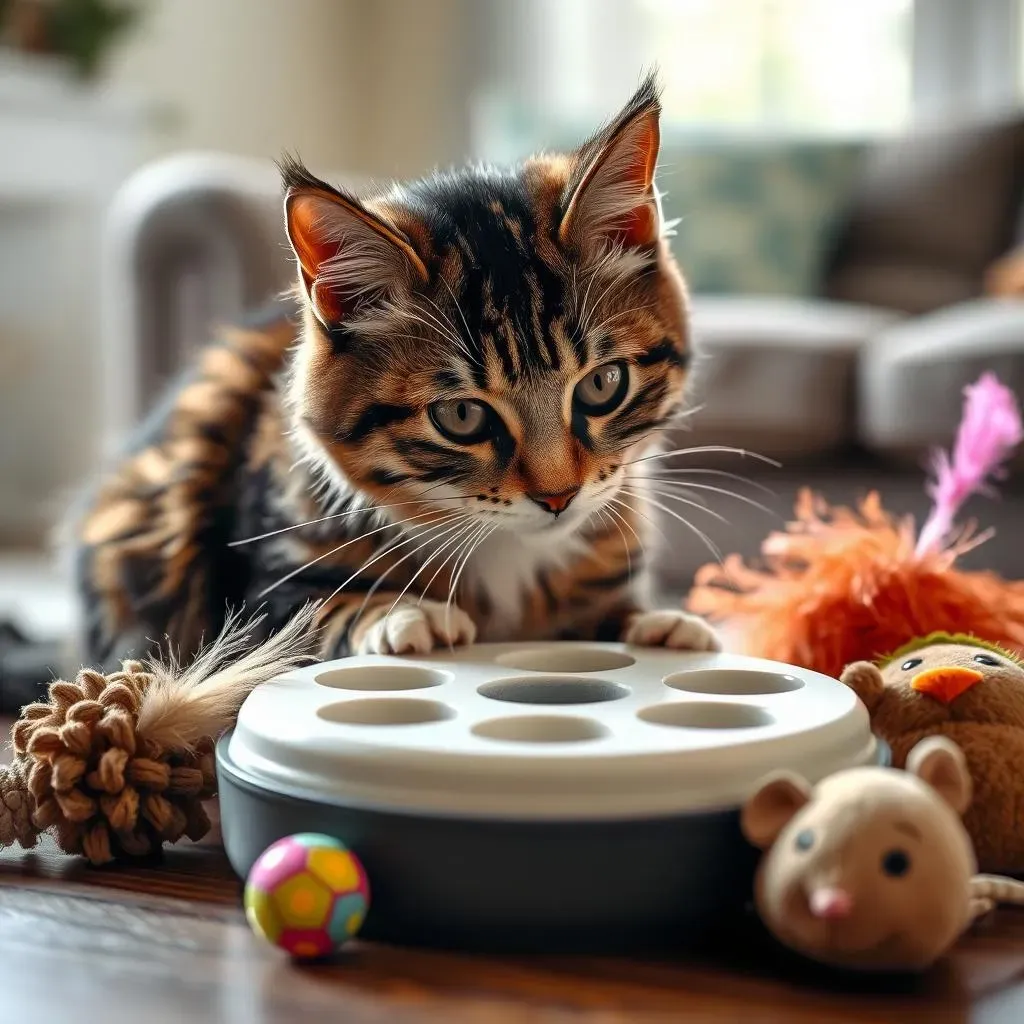
Choosing the Best Cat Toys for Smart Cats: A Buying Guide
Consider Your Cat's Personality and Play Style
Every cat is unique, with their own distinct personality and play style. Some cats are highly energetic and love to chase and pounce, while others are more laid-back and prefer to solve puzzles at their own pace. Before you start shopping for toys, take some time to observe your cat's behavior and identify what types of activities they seem to enjoy most. Do they love batting at dangling objects? Are they fascinated by small spaces and hidden treats? Do they prefer solo play or interactive games with you? Once you have a good understanding of your cat's preferences, you can narrow down your search and choose toys that are most likely to capture their attention.
For example, if your cat is a natural hunter, motion-activated toys or puzzle feeders that mimic the thrill of the chase might be a good fit. If they're more of a thinker, puzzle boxes or treat dispensers that require them to solve problems could be a better option. And if they're a social butterfly, interactive toys that you can play with together, like wands or laser pointers, can strengthen your bond and provide them with valuable mental stimulation. It's all about finding the right match for your individual cat's needs and preferences.
Prioritize Safety and Durability
When choosing cat toys, safety should always be your top priority. Avoid toys with small parts that could be easily swallowed, such as buttons, beads, or ribbons. These can pose a choking hazard or cause intestinal blockages if ingested. Also, be mindful of materials that could be toxic if chewed on, such as certain types of plastic or rubber. Look for toys made from durable, non-toxic materials that can withstand your cat's playful antics.
It's also a good idea to regularly inspect your cat's toys for signs of wear and tear. If you notice any damage, such as frayed edges, loose seams, or broken pieces, discard the toy immediately. Remember, even the most durable toys can eventually succumb to a determined cat's claws and teeth. By prioritizing safety and durability, you can help ensure that your cat has a fun and enriching play experience without putting their health at risk. Also, consider the size of the toy in relation to your cat. A toy that's too small could be a choking hazard, while a toy that's too large might be difficult for them to manipulate.
Consider the Level of Challenge
Smart cats thrive on challenges, but it's important to choose toys that are appropriately challenging for their skill level. If a toy is too easy, they'll quickly become bored and lose interest. On the other hand, if it's too difficult, they may become frustrated and give up. Start with simpler toys and gradually introduce more complex ones as your cat becomes more proficient. Puzzle feeders, for example, come in a variety of difficulty levels, from beginner-friendly options with simple sliding mechanisms to more advanced puzzles that require multiple steps to solve. Start with an easier puzzle to introduce your cat to the concept, and gradually increase the difficulty as they become more proficient.
Also, remember that the level of challenge can depend on your cat's age and experience. A young, energetic cat might be able to handle a more complex puzzle than an older, less active cat. And a cat that's never played with puzzle toys before might need a little more guidance and encouragement to get started. Be patient, observant, and willing to adjust your approach as needed. The goal is to find toys that keep your cat engaged and entertained without overwhelming or frustrating them. Here are some factors to consider:
Factor | Consideration |
|---|---|
Cat's Age | Younger cats may prefer more challenging toys. |
Experience | Start with simpler toys if your cat is new to puzzles. |
Energy Level | Energetic cats may need more stimulating toys. |
Conclusion: Happy, Smart Cats Make Happy Homes
Investing in the best cat toys for smart cats isn't just about providing entertainment; it's about nurturing their intelligence, preventing boredom, and strengthening the bond you share. From interactive puzzles to engaging feeders and creative DIY projects, the options are endless. By carefully considering your cat's individual preferences and learning style, you can create a stimulating environment that keeps their minds sharp and their tails wagging (or, you know, the cat equivalent of wagging). So, go ahead, explore the possibilities and discover the perfect toys to unleash your feline genius. A happy, smart cat makes for a happy home!